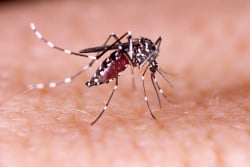INTRAHEPATIC CHOLESTASIS OF PREGNANCY (ICP), Nathan Fox, MD (Digital)

Intrahepatic cholestasis of pregnancy (ICP) generally occurs in the third trimester and rarely before 25 weeks gestation. This medical condition is characterized by severe itchy skin, usually including the palms and soles, and sometimes yellow discoloration of the skin (jaundice), with mild-to-moderate elevations in transaminases, alkaline phosphatase, bilirubin, and bile acids. Since the metabolism of
CARDIAC DISEASE AND PREGNANCY, Nathan Fox, MD (Digital)

Maternal heart disease complicates approximately 1% of all pregnancies and is a leading cause of maternal deaths. Depending on the nature of the condition, the prognosis and recommendations for treatment vary. Types of Heart Disease The risk of complications during pregnancy and childbirth vary by the type and severity of the heart condition affecting a
WHAT YOU CAN DO FOR YOUR BACK PAIN DURING PREGNANCY, Nathan Fox, MD (Digital)

Pregnancy and back pain seem to go hand-in-hand, with up to two-thirds of pregnant women experiencing back pain. Although back pain may increase through pregnancy, this condition is more common among women with preexisting back pain, older maternal age, back pain in previous pregnancies, and multiparity. Back pain is generally due to a change in
ASTHMA AND PREGNANCY: WHAT YOU NEED TO KNOW, Nathan Fox, MD (Digital)

Asthma is a medical condition that women often experience during pregnancy. Pregnancy may affect asthma and may affect the outcomes of pregnancy. Here you will read everything you need to know about the relationship between asthma and pregnancy. The Effects of Pregnancy on Asthma The effects of pregnancy on asthma are various among women. Approximately
ZIKA VIRUS: WHAT PREGNANT WOMEN NEED TO KNOW, Daniel Saltzman, MD (Video)

The Zika virus has been concerning the nation, especially since it poses a high risk to pregnant women. Although everyone should be aware of this virus since it can lead to further health complications, pregnant women should be more cautious. Potential Zika virus symptoms are generally mild, including fever, rash on the hands or face,
SEVERE PREECLAMPSIA SYMPTOMS, Andrei Rebarber, MD (Digital)

Pre-eclampsia with severe features include several symptoms and features that may correspond to those seen in uncomplicated pregnancies such as increasing leg and hands swelling and headaches. But the severity of these symptoms and the unremitting nature of the signs combined with other features described below should give some women a warning that a potential
TESTS TO PREDICT PREECLAMPSIA, Andrei Rebarber, MD (Digital)

Pre-eclampsia is a disorder that may develop anytime from the later part of the second trimester to the first several weeks postpartum. The ability to predict the disorder has limited current clinical benefit given that there is no known therapeutic intervention to alter its course or severity besides delivery. However, accurate prediction may help identify
THE RISK FACTORS OF PREECLAMPSIA, Andrei Rebarber, MD (Digital)

When discussing risk factors of pre-eclampsia, it is important to remember that the cause of pre-eclampsia is unknown as it appears to have multi-factorial processes affecting the final event. Many of the risk factors of this issue are epidemiologic risk factors, or health conditions, that generally cannot be altered. Some of the most classic risk factors of
HOW COMMON IS PREECLAMPSIA?, Andrei Rebarber, MD (Digital)

In the case of pre-eclampsia, diagnoses frequency varies around the globe. Worldwide, pre-eclampsia occurs in about 7.5% of pregnancies, but can be as low as 2% in some countries and up to 10% in others. In the United States, pre-eclampsia occurs in about 3.4% of pregnancies. It is speculated that there are a few factors
PREGNANCY OUTCOMES FOR WOMEN OVER 45 YEARS OLD, Nathan Fox, MD (Digital)

There have been multiple studies that have documented pregnancy outcomes for women over the age of 45 and 50. In 2002, Paulson et al study reported outcomes for 77 women older than 50 with no chronic medical conditions. All of these women underwent embryo transfers conceived after in vitro fertilization with donor egg. There was







